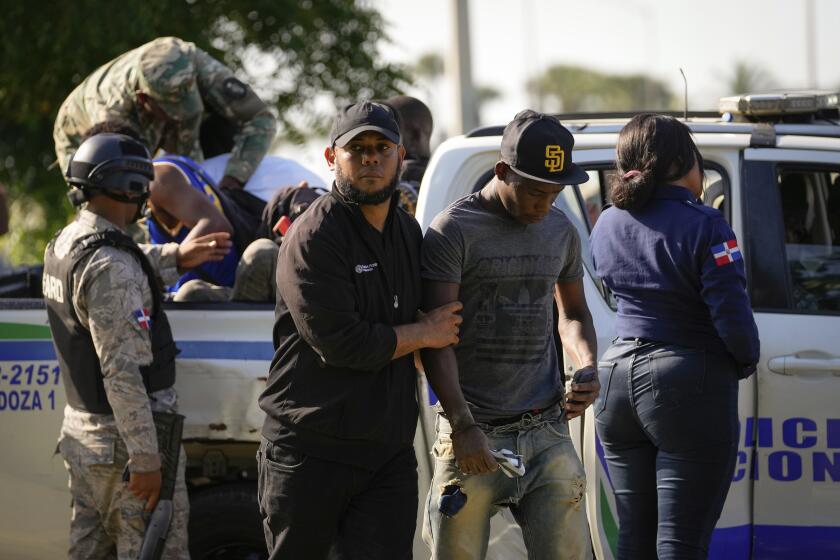Devaluation of Peso Hurts U.S. Stores--Study
The accelerated devaluation of Mexico’s peso that started earlier this month could halt the trickle of returning shoppers from south of the border to U.S. stores, according to a study released this week by the Greater San Diego Chamber of Commerce.
Last year, Mexican nationals showed the first signs of returning to U.S. markets since 1982, when the peso began its drop in value from 22.5 pesos to the U.S. dollar to more than 235 pesos to the dollar.
Sales to Mexicans at 14 San Diego shopping centers dropped to $51 million by year-end 1983 from $100.9 million in 1981, according to the study. Mexican purchases accounted for about 9.9% of all retail sales at those centers in 1981 but fell to 4.4% by 1983.
In 1984, with an improving Mexican economy and reduced U.S. inflation, Mexican shoppers patronized San Diego-area stores in increasing numbers.
‘Shopping in Droves’
“As the Christmas season approached, San Diego businesses reported that Mexican nationals were shopping in droves because of lower prices on merchandise,” the chamber study reported. “While the level of Mexican spending still had not reached pre-devaluation levels, it was much improved over the previous two years.”
To counter the flow of currency out of Mexico, the government stepped up its steady devaluation of 13 centavos a day to 17 centavos in December and to 21 centavos on March 6.
Max Schetter, research director at the chamber, said the latest devaluation is “detrimental” to area retailers in the short term because it will cut Mexican buying power by an additional 23% annually. In the long run, however, the increased rate of devaluation is an encouraging sign “because it shows they are serious about getting their economy in order,” he said.
The mood among retailers is mixed but clearly not optimistic, the study showed.
About 47.5% of those responding said they were unsure whether sales to Mexicans would return to their former peak levels of 1981, 29.1% said they were sure they would never reach those levels and just 22.9% anticipated a full recovery.






